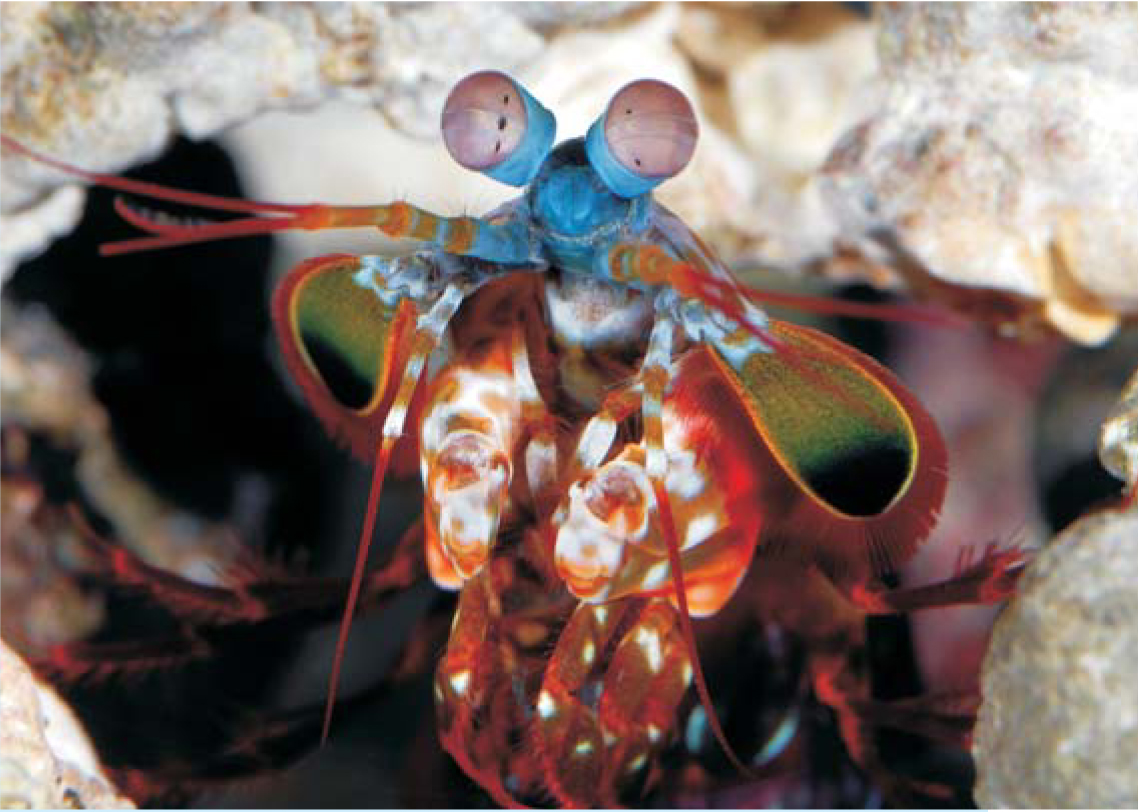A mantis shrimp’s extraordinary eyes
DOI: 10.1063/1.4797022
A mantis shrimp’s extraordinary eyes. Photonic devices that can detect and control the polarization of light across a range of wavelengths are rare. More common are materials such as quartz that can be made into monochromatic optical retarders. Through their intrinsic birefringence, those devices retard the phases of a specific wavelength of incident light, converting the light from linearly to circularly polarized or vice versa. Some multilayered thin films exhibit achromatic retardation through fabricated periodic nanoscale structures that effectively combine the dispersive properties of each layer to achieve wavelength-independent birefringence. But engineering on the nanoscale is tricky, and even the best synthetic achromatic retarders perform poorly across the full visible range, straying from the expected retardation by as much as 2.5%. Nature, though, has already solved the puzzle in animals that have evolved biophotonic structures for signaling, vision, and coloration (see Physics Today, January 2004, page 18

Image courtesy of Roy Caldwell, University of California, Berkeley.

